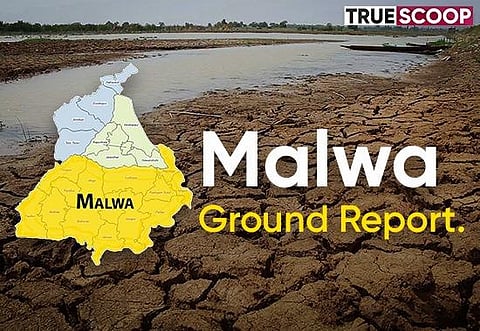

On the one hand, the government is attempting to encourage farmers by providing incentives for paddy sowing, but farmers are complaining that the compensation is insufficient. The government is facing an open water problem. Officials from the government have proposed various solutions to address this issue. One of which is that 60 days before paddy seeding, a crop of moong dal can be planted, which would be ready in 60 days.
As a result, the land's water supply is replenished, and the farmer's revenue is increased by not having to keep the land idle. The paddy crop is ready for harvesting 125 days after receiving the moong crop, following seeding PR 126 or Pusa Basmati 1509, and 20 percent less water is used in the process.
However, the main source of our drinking water was the water of the canals and the Sutlej river, where the dirty water from Ludhiana's Budha Nala, which contains industrial chemical waste, meets the Sutlej river. People in the Malwa region are becoming sick as a result of the Sutlej's drinking water.
There is also a drain from Malwa that is below the Sutlej river's level, which leads polluted water to be absorbed into the earth, rendering groundwater unfit for drinking and causing infections. Even before this, the residents of the Malwa region had made numerous appeals to the authorities. The people of the Malwa region have requested the government to inform them about this problem numerous times in the past; nevertheless, no special improvement has been made to this system; thus, the new government should supply clean and sanitary drinking water.
Raj Davinder Singh Brar, Block Technical Manager Fazilka.
Manjit Singh Gill, a farmer of Rama Mandi, says that today the water level of his fields has gone up to 35 to 40 feet, whereas before 15 years it was 20 to 25 feet. The main reason for this is that he tells, the paddy crop to be planted recklessly and ahead of schedule, disregarding government orders. If the entire water level is seen, however, acid water up to a depth of 90 feet emerges, which is neither fit for drinking nor cultivation. This is the situation in about half of Malwa; if water is not used for agricultural purposes on time, our land will soon be devoid of water.
Also read: True Scoop's first ever digital workshop at Thapar University, Patiala
The city people primarily use the water from the canals, but when it comes to their homes, the water includes a strong odor, raising questions about the government's performance. The government has been asked to stop playing with people's health in this way and to stop diseases from spreading.- Ashok Kumar Sharma, Senior Citizen Retired Government Officer
As much as the government is doing its work, I appeal to the people to keep drinking water covered. Drink boiled water as far as possible and take care of your health. Drinking bad water can lead to stomach diseases, cholera, vomiting, diarrhea and many other diseases.- Dr. Atin Gupta MD Indrani Hospital Bathinda